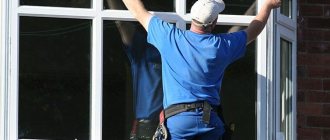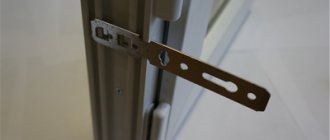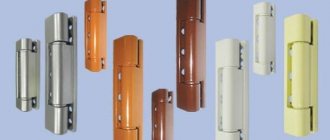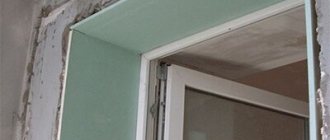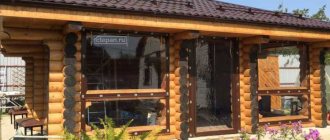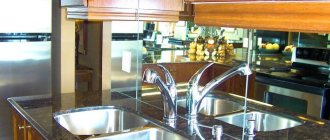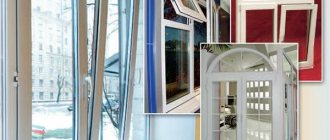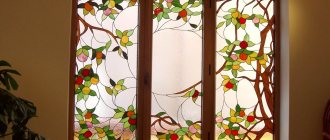Rednasty
26770 1 2
Rednasty October 17, 2016I'm not a wizard, I'm just learning. But I know everything about interior styles, comfortable home improvement and the transformation of Khrushchev’s apartments into luxury apartments. Hobbies: I like to give good advice.
Still don’t know how to protect your windows in summer? Then I'll try to help you
If your apartment windows face south, you are definitely familiar with the problem that I want to talk about below. Significant discomfort caused by the scorching rays of the sun can turn a room, even with a designer interior, into a real oven.
After all, excessively bright lighting can not only irritate the eyesight, but also overheat the air in the room, which raises the logical question of how to darken the windows in order to avoid such a misfortune.
Since I am familiar first-hand with all the “charm” of the sunny side of the house, I wanted to get rid of this problem once and for all. After asking around among friends and searching through many pages on the Internet, I found several of the most successful (so it seems) ways to darken windows. I will tell you about them below.
Window tinting
How to darken the windows in an apartment? There are several options to solve this problem. The simplest of them is ordinary sun protection film at an affordable price, which can be bought at the market or in a construction supermarket. It is glued to the windows and prevents ultraviolet rays from entering the apartment. It can be dark, stained glass or mirrored (made of foil), the choice depends on you and the design of the apartment. A huge drawback of the film is that the apartment gets dark quickly and it’s not so easy to tear it off if you get tired of it. In addition, the appearance of the window is not so aesthetically pleasing, especially if you choose cheap foil film, which is often glued to car windows.
Another option is reliable roller blinds or blinds that can be lowered in the morning or afternoon when the sun is at its peak. Blinds can be chosen not only vertical, as is often used in offices, but also quite homely - horizontal or pleated, which do not cover the windows tightly, but with soft background light.
Popular dimming systems:
- tinted glass coatings;
- awnings (attached outside the balcony or house);
- roller blinds made of fabric (acrylic, polyester cotton, linen);
- roller blinds with reflective effect;
- classic curtains;
- Roman blinds (as sun protection and a bright decorative element);
- all types of blinds.
The choice of darkening option depends on the size of the window and the design of the apartment.
Redsonn professionals will help you install roller blinds, awnings and roller blinds. You can choose any style and color, and also adjust the lifting height. Such curtains do not wrinkle and practically do not get dirty. They are easy to keep track of and you don’t have to worry about them being torn off and carried away by the wind.
Balcony darkening
The windows on the balcony are also darkened quite often, regardless of whether it is glazed or not. If the balcony is open, then you can easily protect yourself from the sun with balcony awnings. They will also save you from rain, and if you choose the winter option, then from snow. They use roller blinds, blinds and much more for the balcony.
Advantages of window and balcony shading systems:
- effective absorber and reflector of light;
- excellent view of the street;
- protection of glass and balconies from precipitation;
- protection of furniture and clothing from the negative effects of ultraviolet radiation;
- comfortable environment for house plants and winter garden;
- possibility of height adjustment (for roller blinds and blinds);
- lightweight material.
Thanks to a well-thought-out system of blinds or roller blinds, the light flow is not just blocked, but limited. You can install ambient light or turn on the day/night system, which will create harmonious lighting in your home that is not harmful to your eyes.
Modern models are equipped with a remote control, so you can control them without leaving the sofa. By choosing roll protection, you don’t have to spend money on air conditioning, since the room will have a minimum of sunlight and it won’t overheat.
Fabric roller shutters
Roller blinds are considered another of the most common options installed on balcony windows to protect the room from the sun. They are distinguished by their simplicity of design (free-hanging or cassette), ease of installation (on a frame, ceiling or wall near a window) and control (on a chain or using a remote control). Roller blinds for the balcony fit tightly, without sagging, to the opening, allowing you to adjust the degree of illumination of the room, rising/lowering and fixing at different heights along the window. They are easy to care for because the products:
- impregnated with dirt and water-repellent agents;
- can be cleaned with a mini vacuum cleaner;
- Made from durable fabrics.
The most commonly used roller blinds for balconies
| No. | View | Peculiarities |
| 1 | Black Out | Lightproof, dense structures capable of reflecting UV rays to almost 100 percent volume |
| 2 | Day Night | Products whose canvases consist of alternating stripes - transparent and light-proof, and are placed on both sides of a horizontal shaft. By changing the position of the canvases in relation to each other, you can either partially or completely block the balcony from light |
| 3 | Bamboo | Eco-friendly, moisture-resistant roller blinds that are not exposed to the negative effects of ultraviolet radiation and consist of bamboo cut into strips. Installed on the loggia (photo), they protect the room from overheating as much as possible |
The advantage of fabric roller blinds is their versatility: the products do not visually reduce the size of the room, and therefore fit harmoniously into any type of interior.
How to tint windows yourself
Every year the need for window tinting in a residential or office space increases. In summer, the sun's rays create severe discomfort. If the windows of the room face the south, then in addition to an excess of light, the rays cause noticeable overheating of the room. Window tint film will help get rid of the annoying sun. In addition to the darkening effect, window film has a number of positive properties:
- Blocks 99% of ultraviolet radiation, making interior items less prone to fading
- Absorbs infrared radiation
- Helps avoid glare on surfaces (TV screen, computer monitor, gadget)
- Creates additional strength for glass
- Traps warm air indoors in winter
- Protects glass from chips and cracks
As a rule, when tinting windows indoors, 3 main types of coatings are used:
- Mirror architectural tint films
- Heat-protective athermal films
- Anti-vandal protective films for glass
All types of these coatings are glued according to the same principle, which we will discuss below.
Where to buy good plastic windows in Moscow?
| "Moscow Windows" | 5/5 |
| "Windows of Comfort" | 3.5/5 |
| "Window Plastic" | 3/5 |
Instructions for applying film
The positive features of the film also include additional protection for the glass - even if hit, the glass will not crumble, but will stick to the protective film, protecting it from the risk of damage from fragments. Many owners, having tried to apply the screen once, no longer refuse it. This serves as additional confirmation of the exclusivity of film as a material.
Window tinting yourself
In order to tint the windows in a room, it is not necessary to have a lot of experience; it is enough to be careful and have the necessary set of tools.
- The tint film usually has a width of 1.52 m (Be sure to measure the area of your glass and do not forget to leave a margin of 4-5 cm around the perimeter)
- A spray bottle whose volume depends on the area you want to cover
- Sharp utility knife (It is better to use a knife with a blade size of 9 mm)
- Polyurethane or silicone molding (we do not recommend pasting with plastic or felt moldings; they can damage the film)
- Plastic or metal corner 6) A solution of liquid soap mixed with water in a ratio of 1/3
You can purchase a ready-made kit for tinting glass; usually, the kit is cheaper and contains all the necessary tools.
There are two options for installing the film
- With disassembly of the glass unit and further application of film
- Without disassembling the glass unit
In this article we will look at installation without disassembly; technically it is easier.
1. Wash and degrease the glass
2. Apply the soap solution evenly to the glass, leaving no dry areas
3. Remove the protective film from the tint (it’s better to do this with an assistant)
4. When removing the backing, moisten the film with soapy water (this will allow the film not to stick together)
5. Place the film on the glass (thanks to the soap solution, you can easily move it on the glass
6. Using a silicone or polyurethane scraper, push the water from the middle to the edge (do not press too hard as this may damage the film or dislodge it)
7. Using a corner and a knife, carefully trim off the excess film, if necessary, tuck the edges under the window elastics
Let the coating dry for at least 24 hours!
Using these instructions, you can easily tint the windows in your room.
If you don’t have time or this process seems complicated to you, then you can contact our specialists. In addition to fast and high-quality installation, you will receive a 1-year warranty on work!
Average prices in the Russian Federation
The total price for tinting a PVC window will depend on the application method - factory or manual, the type of film, the area and type of glazing in the wall, stained glass window, on a balcony or loggia, as well as on who will perform the work - the owner or a third-party organization and for how long Warranties are offered for installation.
Note! Good warranty conditions for darkening PVC glass are considered to be conditions of 5 years and above.
For materials
Average prices for material per 1 m2:
sun protection film, 600 rub.;- athermal film, 800 rub.;
- anti-vandal film, 700 rub.;
- decorative film, 600 rub.;
- vinyl film, 800 rub.;
- mirror film mSilver, 750 rub.;
- tinting film Bronze RUB 652;
- armoring film SF 100 CL 672 rub.
For services
The cost of tinting services for PVC windows solely depends on the characteristics of the double-glazed window and the modification of the film. The cost is calculated individually for 1 m2 of glazing. The price includes auxiliary materials, glass preparation and the tinting process itself. When working at height, the cost increases; for glazing the 1st floor, the average prices for applying protective film are:
- sun protection film, 400 rub.;
- athermal film, 420 rub.;
- anti-vandal film, 450 rub.;
- decorative film, 300 rub.;
- vinyl film, 450 rub.;
- mirror film mSilver, 500 rub.;
- tinting film Bronze 500 rub.;
- armoring film SF 100 CL 500 rub.
For a factory product
Average cost of double-glazed windows with factory darkening per 1 m2:
- sun protection package, RUB 6,900.
- STOPSOL FOENIX GRAY double-glazed glass, RUB 6,000;
- glass bronze, bulk, 10 mm, 2700 rub.;
- glass bronze, bulk, 5 mm, 1120 rub.;
- glass bronze, bulk, 4 mm 925 rub.
Reference. Installation of tinted factory double-glazed windows costs the customer from 4,000 rubles. for 1 m2.
Advantages and disadvantages of tinting windows in an apartment
The phrase "tinted glass" was previously used only in relation to cars. However, after plastic windows in apartments and houses gained popularity, the issue of tinting became relevant for domestic use.
What is a tinting film? This is a special material that provides protection from sunlight and, accordingly, from ultraviolet radiation. According to research, the film transmits only 1% of ultraviolet radiation, and is capable of reflecting up to 80% of sunlight. This proposal is especially relevant in the summer, because thanks to it, the room maintains a comfortable temperature for a long time.
The main task of the film is to protect the premises of the building from heating by the sun's rays, but at the same time, in winter, it demonstrates its necessity. Thanks to its reflective properties, tinting not only prevents light from passing through, but also reduces heat consumption. The level of effectiveness of the material directly depends on the type chosen.
To date, manufacturers have developed a lot of proposals, including:
- masking tints – contribute to the creation of glare, thereby reducing the level of window transparency;
- tints with protection against eavesdropping.
To understand the degree of necessity and feasibility of tinting, it is worth initially understanding the advantages and disadvantages of this process.
Choosing a double-glazed window for a window with increased sun protection.
An increased level of light reflection compared to conventional glass is a single-chamber double-glazed window with energy-saving glass (low-emissivity). Silver plating on the inside of the glass is responsible for reflecting the sun's rays. For comparison, the solar transmittance factor of solar energy in a conventional double-glazed window is 78%, and in a double-glazed window with energy-saving glass – 51%. This is a significant difference.
It should be remembered that the greater the sun protection, the less daylight there will be in the room. It is important to take individual needs into account here.
- use of low-emissivity glass. .
- combining Stopsol Phoenix and Top-N (low-emission glass) glasses in one double-glazed unit.
- the use of tinted glass in a variety of colors.
Consult a specialist from the Attic Windows company. We cooperate with the Russian Glass Company (RSK), so any double-glazed window existing on the window market will be made based on your wishes.
Benefits of applying window tint
Planners, designers, repairmen highlight a large number of advantages of tinting film:
- Dimming the bright sunlight entering the room through the window. In addition to comfortable lighting, the owner no longer has to worry that decorative finishes, furniture, appliances, and other products will suffer from prolonged exposure to sunlight.
- Retains heat indoors. With the use of film, there is a decrease in heat loss, especially in winter.
- The mirror surface effect formed on the outside of the building provides protection from outsiders. Now passers-by will not be able to see what is happening in the apartment or house, especially if we are talking about the first floor.
- Savings on curtains and curtains, roller blinds, and other textile devices that previously performed protective functions.
- Window tinting with decorative films will allow you to diversify your design. Any images can be applied to their inner surface using photo printing techniques.
- Providing additional safety in case of glass deformation. If previously the glass could have shattered into small fragments due to a mechanical shock, now it will remain on the film if damaged.
- Tinting windows in an apartment with armor film will provide protection against penetration from the outside of the house. But you should understand that they will not completely block access for a criminal unless you have an expensive type of bulletproof film installed.
Available means
Often, owners of apartments and dachas whose windows are oriented to the south do not bother themselves with what they consider to be unnecessary work and expenses on purchasing curtains, blinds or film, but use improvised materials to shade the windows.
The most common raw material for improvised “light filters” is newspapers, which are attached to windows using buttons, staplers or tape.
Another common option is to use aluminum foil. Baking foil is the most popular material at hand in the fight against the blinding Sun.
Foil is also often used to cover thin roll insulation materials: “Penofol”, “Izolon” and the like. Moreover, the effect of using these materials exceeds all expectations. Due to the fact that the foil almost completely reflects the sun's rays, the polyethylene foam backing acts as a “thermos” and prevents the penetration of ultrasonic radiation (thermal) into the apartment.
Thus, foil, despite the unpresentable appearance that a window covered with it acquires, copes with its tasks in the best way, on a par with reflective “mirror” film.
Wallpaper remaining after renovation can be successfully used to shade windows from excess sunlight. From them you can literally make original blinds in 20-30 minutes, which can last the entire summer season, and in the fall, as unnecessary, are mercilessly thrown away.
You can make accordion blinds by folding a strip of wallpaper 30-50 mm wide and attaching a wooden weight strip at the bottom to allow you to straighten the improvised blinds.
Disadvantages of tinting films
There are not many disadvantages of using tinting films. All of them are connected by the feeling of comfort of the home owner:
- After tinting a window in an apartment, the sun will warm up the room much more slowly. This situation is ideal for the summer, but in cold weather it can be a disadvantage.
- Tinting windows located on the north side or shaded by trees can lead to twilight in the rooms of the house.
- Depending on the color of the film, the room may acquire a corresponding shade.
- Lack of a mechanism capable of adjusting the level of light in the room.
Due to the above factors, the home owner must independently make a decision regarding the advisability of window tinting. To do this, you need to initially weigh all the pros and cons, evaluate the number of floors of the apartment, the direction of the world, and the lighting. Only by analyzing the available information can we say whether pasting will be profitable, or whether the money is wasted.
Types of film for tinting windows in apartments and on balconies
Three main types of tinting films are popular on the market:
Sun protection . As a rule, windows facing south are covered with this film. The use of such a film allows you to effectively combat sunlight, room heating, and solar glare on devices and household appliances.
In practice, it has been proven that modern sun-protection films can save energy and heat consumption.
Mirror . Its characteristics contribute to the reflection of light during the daytime. The reflective surface does not transmit about 80% of rays into the room, thereby providing a comfortable temperature regime and protection from ultraviolet and solar radiation.
The peculiarity of the material is the presence of a large number of colors, due to which the facade of the building takes on a new look. An indisputable advantage is the effect of one-way visibility, that is, people passing by will not be able to see what is happening inside the room.
Matte. Quite popular when gluing interior doors. It can also be seen on the doors to the bathroom and kitchen. Many manufacturers install it directly at the factory. You can also buy it and stick it yourself.
The advantages of film are that it does not replace space, but it is not as effective against sunlight. Therefore, when covering a balcony located on the sunny side, it is better to use a mirror or sun protection film.
Protective . A special type of film, which, in addition to the advantages of previous types, combines protective properties. In other words, windows with such film are much more difficult to damage, even under strong mechanical stress. Thanks to this, owners can save money on alarms, since it will be quite difficult for burglars to get inside the building.
The level of protection depends on the selected type of modification. Manufacturers present films on the market that make glass completely unbreakable, or films with a slightly lower level of strength.
Specifics of solar balconies
In winter, to control the temperature, it is enough to insulate this part of the apartment from all sides. If necessary, heaters can be connected. On a warm balcony you can set up a work area or relax while looking at passers-by on the street.
In summer it is much more difficult to use it as additional free space. If the windows on its side face south or southwest, the sun's rays heat not only the double-glazed window. The entire casing becomes heated by the temperature, it becomes impossible to breathe, even wide open windows and doors do not solve the problem. And at night in the adjacent room it becomes stuffy, it’s hard to sleep, the material from which the walls are made cools down, heated air enters the apartment.
The main problems of apartment residents who are looking for something to cover their balcony windows from the sun:
- the air becomes dry, heats up to 45 degrees or more;
- if the room is not air conditioned, it is difficult to breathe in the apartment;
- sunlight makes it difficult to concentrate on work, is reflected in the TV, and blinds the eyes.
As a result, not only people in the apartment suffer, animals and plants do not tolerate such conditions well and may even die. In order to prevent danger and save yourself from unpleasant sensations, windows are covered with curtains, blinds, and glass is masked with special films. Air conditioning is expensive and wastes electricity. And this device will not save you from direct sunlight.
DIY window tinting in the apartment and on the balcony
When starting the independent tinting process, you should make sure that you have all the materials and tools, which include stationery knives, rubber spatulas, and a spray bottle with soapy water.
Pasting is carried out by following the recommendations of experienced craftsmen:
- Measuring window glass sizes (from bead to bead).
- Roll out a roll of film on a flat surface of the floor or table, and transfer the corresponding measurements onto it, with a margin of 1-2 cm.
- Carrying out preliminary work to clean window glass from dirt and grease stains. To do this, you will need a pre-prepared spray bottle with a soap solution and a rubber spatula, which will be used to remove the applied liquid from the surface.
- Removing the protective layer (liner) from the film.
- To remove the sticking effect, which can prevent even adhesion, the surface of the film and glass is wetted with a soap solution.
- Window gluing occurs from top to bottom, by smoothly smoothing the film to the surface of the glass.
- Using a rubber spatula, remove excess moisture from under the film by smoothing from the center to the edge of the glass.
The final stage of tinting will be trimming all protruding edges of the film. Provided the technology is followed correctly, the final result will not take long to arrive.
Glass with variable transparency: features, advantages, applications
Today we want to tell you about the innovative technology that we successfully use in our “Window Factory”. Surely, you have known for a long time that there are types of glass with unusual properties, for example, transparent on the inside and opaque on the outside. How do you like glass that changes transparency at your request? It sounds like science fiction, but the future has already arrived for our clients.
Smart-glass is smart glass with adjustable transparency. This material has a special structure and composition. The operation of electronic glass is based on the polarization of microparticles (PDLC / LCD, SPD, ECD) in an electromagnetic field. Under the influence of electric current, the glass surface changes its light transmittance.
Using an electric switch, you can adjust the properties of the glass: when turned on, the glass becomes frosted, and when turned off, transparent. This transition takes place in a fraction of a second.
Voltage (12-36 W) is supplied to the glass surface via hidden wiring.
Windows with adjustable transparency receive special properties due to a polymer liquid crystal film located between sheets of glass. Liquid crystals without electricity come to a solid state, inclusions are formed on the film, arranged in a chaotic manner, and scattering light rays. This condition allows you to get a matte surface.
Changing the transparency variable occurs instantly. In this case, no halftone occurs. In windows with controlled light transmission, the degree of dimness changes slowly. Under the influence of different voltage values, you can easily set the required degree of transmission of light rays.
The history of electrochromic glass
The idea of using smart technologies for the glass industry is not new. Such products have been actively produced in production since the late 90s of the last century. Despite its long history, “smart” is a new product for the end consumer.
Engineer Steve Abadie got excited about the idea of electronic glass back in the late 70s. At that time, it was impossible to realize such a dream. But in 1984, using innovative liquid crystal technology, LC Glass was manufactured - the first smart glass (smart glass).
The glass market of the 80-90s did not need an innovative product that was not clear to industrialists. Steve Abadie had to wait until the early 2000s. The inventor opened his own company and brought electronic glass to the market under the E-Glass brand.
In the post-Soviet space, electronic glass appeared only in 2010. Gradually conquering the glass market, smart technology began to be used not only in offices, administrative and medical institutions. Glass began to be used in the production of double-glazed windows for residential buildings and for the decoration of private interiors.
Despite their popularity in Europe and Russia, double-glazed windows, partitions, and decorative elements made of electronic glass are rare:
- luxury country real estate, multi-level apartments;
- offices of banking institutions;
- business center premises.
Advantages and disadvantages of reflective film for windows
The principle of operation of reflective films is to neutralize ultraviolet rays and create optimal light brightness. It is used in various rooms to reduce air temperature, which is important when the heat outside in summer is unbearable. In addition, thanks to the dim light, a cozy atmosphere is created, which helps not only to relax, but also to work productively.
Reflective film is especially valued in enterprises and offices, as it makes working with a computer much easier: there are no glares and rays that interfere with normal work and damage vision. And yet, many people are familiar with the condition when, from the constant influence of the sun through the window, already in the middle of the working day, their head begins to hurt. These unpleasant sensations are far from uncommon, but they can be successfully combated. Let's look at the main advantages and disadvantages of reflective film for windows.
- Provides pleasant coolness on hot days by reflecting the sun's rays.
- Protects furniture, wallpaper, carpets and other interior items from fading in the sun.
- The presence of film on the windows allows you to not use household appliances such as an air conditioner or fan so often, which will significantly save the family budget.
- Makes it difficult to see your room from the street. This is a suitable option for people whose apartments are located on the ground floors or for owners of private houses.
- Removes annoying glare from your TV or computer screen.
- Even if a window is accidentally broken, the film will protect a person from shrapnel wounds, since they will not fly down, but will remain hanging on the film.
- Reflective films are fire-resistant and do not release harmful elements into the air when heated. They are even used at particularly dangerous sites.
Reflective film for windows
- Due to the thinness of the material, there is still some danger of damage during cutting or as a result of mechanical action.
- If the purchased film is of poor quality, then under the influence of the sun it will begin to fade in places, and in some places it may stick to the window so strongly that considerable effort will be required to wipe it off.
- In the evening, when the electric light is on, the entire room will be visible from the street, so you need to have curtains on the windows.
Roman curtains
The design of these products, the method of installation and control are reminiscent of roller blinds on a balcony, with the difference that Roman curtains are not wound when lifted onto a shaft, but are gathered into horizontal folds. In case of fading of the fabric, severe contamination or accidental damage, the canvas can be easily removed from the curtain rod and completely replaced. There is also the possibility of using separate seasonal canvases - for winter and summer.
We recommend: How to heat a room evenly using a heat exchanger
They also have a protective impregnation and are easy to clean. Products made from natural fabrics and bamboo “straws” are suitable for the balcony. Roman curtains on a spacious loggia can be decorated with lambrequins, curtains, etc.
Reflective film for windows
This film has already proven itself on the market for a long time. Its advantage is its ease of application. You don't have to have any skills to do this. In the same way, such a film can be easily removed, returning the window to its former shine.
You can equip any window surface with reflective film. Manufacturers offer a choice of dimming ranges that range from 15%-50%. This allows each buyer to choose the desired window tone. The higher the dimming range, the more reflective efficiency can be obtained from the film.
Reflective films can be:
- toning;
- darkening;
- with metal reflective coating.
This film has a lot of advantages and has a very inexpensive price. And the roll is enough for the entire double-glazed window.
Sun control film for windows
By protecting from excess sun rays, sun protection film creates comfort and coolness in the room. Many people, especially women, are worried that the presence of such film on the windows can lead to the death of all house plants. I would like to reassure such flower growers, since there is no danger to the flowers (except perhaps exotic ones, accustomed to high consumption of ultraviolet rays). They quickly get used to the darkened environment and continue to bloom.
Sun control film for windows
The base of the film consists of polyester. This material is characterized by strength, elasticity and transparency. During manufacturing, several layers are created, which are connected using a laminator. To protect the inner layers, metal spraying is applied first.
There are several types of sun protection films:
It is glued to the outside of the window and can protect the window from impact. Available in light and metallic colors.
Installed on the window itself or the space between the windows on the side of the room. It comes in different colors and varying degrees of UV protection.
The main function of sun protection is complemented by anti-impact properties.
These films are manufactured using special technology and are quite expensive.
Pleated curtains
This is a type of fabric roller shutter with the same variations in control, fastening, design and properties, in which the main fabric is made not of smooth textiles, but of fabric with folds that visually resemble an accordion. Their specificity is the ability to close any part of the opening. Pleated roller blinds on the balcony can be folded and fixed in this form at the bottom, top or in the center of the window. Curtains tend to fit harmoniously into openings of various sizes and shapes - both standard and non-standard (arched, trapezoidal, triangular, round, semicircular) and make the decor on the balcony elegant. The photo below demonstrates the elegance and elegance of pleated curtains:
Light protective film for windows
The temperature range at which the sun protection film does not lose its properties is from -50C to +90C. You need to take care of the film in the same way as you take care of windows. It can be washed with window cleaners and is not afraid of water. Its advantage is that the surface is protected from scratches, having a so-called scratch-resistant layer.
To install it there is no need to dismantle windows or glass frames. There are two ways you can do this.
- External sticking. The advantage of this method is its effectiveness. Due to the fact that the film is glued on the outside, the window itself does not heat up and, as a result, no heat enters the room. To install the film, it is better to remove the glass unit, stick it on, and then put it in place.
- Internal sticking. The film is glued to the inside of the glass unit (be careful, if the package is energy-saving, there is a coating on the glass, so it is prohibited to glue the light-protective film). The effectiveness of this method is much less than the first.
Mirror film for windows
Plants
Another pleasant way to create a cool atmosphere and shade on the balcony is by planting indoor plants. Important: for the sunny side, you need those varieties that can withstand high temperatures. For high spaces, it is better to choose giant, climbing and lush plants.
For a dense curtain, entire greenhouses are created with pots on shelves along the windows to the ceiling. When the plants grow and bloom, a green curtain from the sun will appear. Suitable for the following purposes: hibiscus, lobelia, salander, passionflower. It will be necessary to care for the flowers, organize timely watering and sometimes hide them in the shade.
Mirror film for windows
They are called mirrored because one of the film layers is metallized. They are able to regulate the temperature not only in summer, without letting in too many ultraviolet rays, but also in winter, blocking the escape of heat from the room. They protect the room not only from ultraviolet radiation, but also from infrared radiation, which has a positive effect on human health.
Such mirror films are especially popular among companies that require one-way visibility and privacy conditions. These could be office buildings or security organizations, where optical security is also in demand.
In addition, such a film will help make the building look more modern and attractive.
As you can see, there is a large selection of reflective films for windows. Before purchasing, do not forget to calculate the footage you need. Choose a product only from a proven and high-quality manufacturer. Typically, the average service life of such films is about 10 years. Therefore, it is better to spend money on a good film once than to stick a new one every year.
